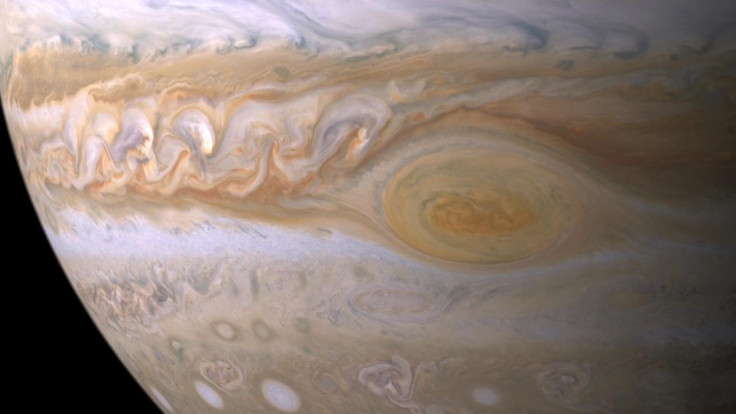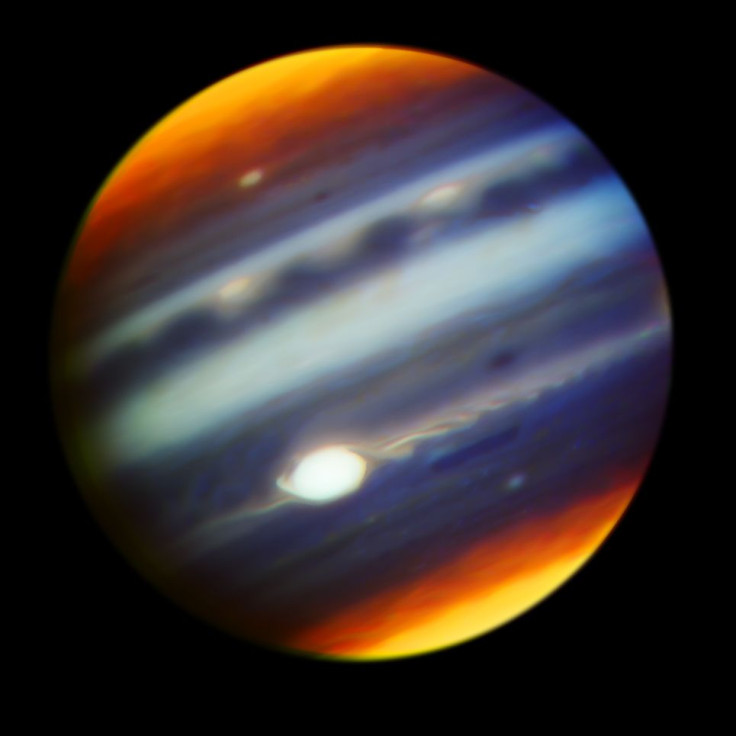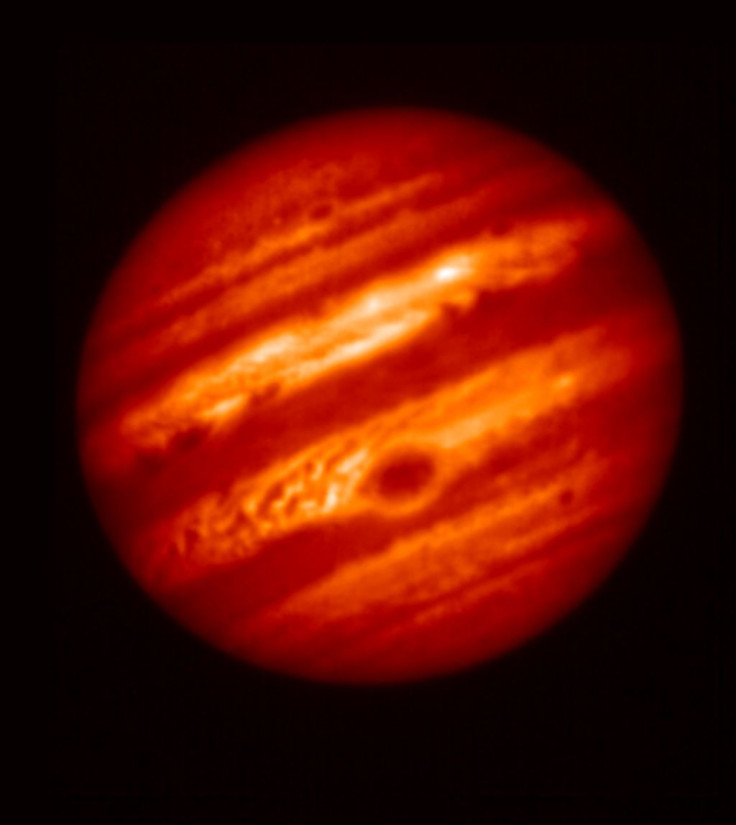NASA’s Juno Flyby Over Jupiter’s Great Red Spot Soon After First Orbital Anniversary

The Great Red Spot on Jupiter is not a misnomer, considering its size is about three and a half times that of Earth. And this mysterious weather phenomenon on the gas giant, which has been swirling over the planet for at least 150 years — it could even be as much as 350 years — is set to get a closer look when NASA’s Juno spacecraft flies over it July 10.
At 10:30 p.m. EDT on July 4, Juno completes one year in orbit around Jupiter, and the July 10 maneuver will be its sixth science flyby over Jupiter’s cloud tops. Shortly after 10:06 p.m. EDT, the spacecraft will be about 5,600 miles above the crimson swirls and coils of the spinning anticyclone which is 10,000 miles wide. It will be the first time a human-made instrument would be so close to the Great Red Spot.
Read: Chaotic Cyclones, Massive Magnetism At Jupiter Revealed By Juno
All of Juno’s eight scientific instruments, as well as its color camera — JunoCam — will be operational during the flyby.
“Jupiter’s mysterious Great Red Spot is probably the best-known feature of Jupiter. This monumental storm has raged on the solar system’s biggest planet for centuries. Now, Juno and her cloud-penetrating science instruments will dive in to see how deep the roots of this storm go, and help us understand how this giant storm works and what makes it so special,” Scott Bolton, principal investigator of Juno from the Southwest Research Institute in San Antonio, said in a statement Saturday.
Information gathered by Juno during the July 10 flyby will be supplemented by data gleaned from observations made from Earth. On May 18, two telescopes on Mauna Kea peak in Hawaii obtained very high resolution images of Jupiter at different wavelengths.

Observations with the Gemini North telescope used special near-infrared filters that provided a glimpse of the Jupiter’s upper atmosphere and clouds, and showed a long ribbon-like wave extending off the eastern side of the Great Red Spot. Meanwhile, Subaru Telescope’s Cooled Mid-Infrared Camera and Spectrometer made mid-infrared observations, and revealed the interior of the Spot to be cold and cloudy, increasingly so toward its center, and becoming warmer and clearer at the outer regions.

Juno science team member Glenn Orton of NASA’s Jet Propulsion Laboratory in Pasadena, California, explained the significance of the data in a statement Friday: “Observations with Earth’s most powerful telescopes enhance the spacecraft’s planned observations by providing three types of additional context. We get spatial context from seeing the whole planet. We extend and fill in our temporal context from seeing features over a span of time. And we supplement with wavelengths not available from Juno. The combination of Earth-based and spacecraft observations is a powerful one-two punch in exploring Jupiter.”
Read: Juno Photos Of Jupiter Reveal New Discoveries About Gas Planet
At its closest approach during the flyby, which will happen at 9:55 p.m. EDT July 10, Juno will be about 2,200 miles over the cloud tops. Before it reaches the Great Red Spot, the spacecraft would have traveled 24,713 miles in eleven minutes and 33 seconds. When Juno marks its orbital anniversary Tuesday, it would have covered a total of approximately 71 million miles in orbit around Jupiter.
© Copyright IBTimes 2024. All rights reserved.





















